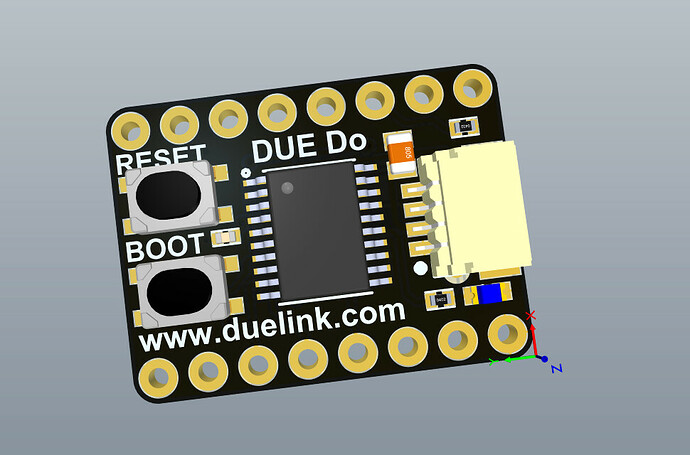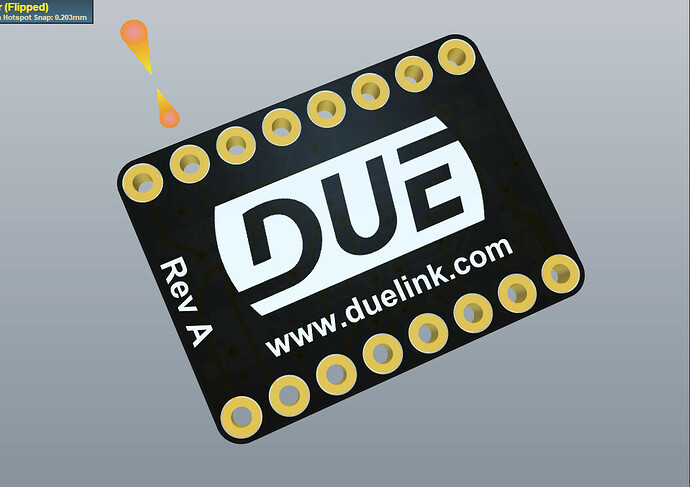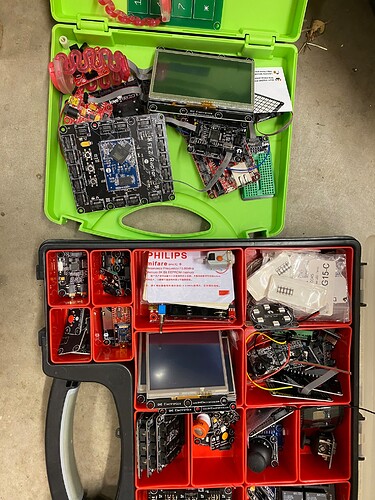Interesting but they didn’t use their seesaw on their stemma modules!!
What problem does this solve? If you need to buy a board to connect yet another board? And once you have “connected” the boards, how do you handle software?
My idea started when I was connecting stemma and qwiic boards to the “secret” FEZ Pico and I was thinking how cool it is to have unified connector, like gadgeteer did. But then my excitement vanished when I started with the code. I had to look at arduino driver code that is poorly written and reverse engineer it to determine how the module worked. 2 hours to get a button to work!!!
Anyone else thinking abut Netduino Go! ? ![]()
Netduino GO to be exact. Yes someone reminded me already… But please do not compare us 
Yes, let’s compare you! You’re still in business and thriving, they’re… ![]()
I like the idea of just using I2C instead of trying to create something like GoBus that is proprietary and tries to be all things.
Indeed it does not solve your problem, as you stated it.
I was simply thinking that there are already (too) many modules for a same sensor and that, maybe, only the connector on the module would be different.
Hence the possibility to have those different connectors on the mainboard.
But this idea also implies that we should be able to change pins assignments on the mainboard. Which may not be possible or easy, I don’t know.
Now, about unifying “everything”, I’m not sure it’s a good idea globally. Precisely because of the vast diversity of modules and associated functions.
You may have to restrict the drivers to the bare minimum functions (or handle the lack of functions in a same modules family) and it would not be satisfying in most cases.
But perhaps I don’t understand what you try to achieve, so I may be completely off-topic ![]()
From my viewpoint, Gadgeteer lowered the barriers for beginners - as I was (and largely still am). Compared to Arduino shields, it was a breeze to arrange different boards.
Creating ones own modules was easy-ish, even for beginners - hole layout, board color and sockets hardware-wise were the main things to consider (in addition to the modules functionality)
Sounds like introducing DUE to the module boards raises that bar higher. Now will have similar requirements as Gadgeteer, but now it will have to have the extra uMcu and any associated parts.
Similar on the software side, you need to now develop mainboard and due module software, instead of just “standard” drivers.
But I guess these are similar barriers as Qwik and Stemma boards.
My opinion is probably in the small percentage - want to make own modules for fun, but are not advanced or a commercial concern.
But I look forward to this new system - I too have old FEZ hardware, when it was the old acronym and some gadgeteer hardware laying around.
Every time I’ve used GHI items things just work
Yesterday my FEZ Feather arrived.  It just works - well once I figured out the samples were for the Portal, and I had to change the pin def.
It just works - well once I figured out the samples were for the Portal, and I had to change the pin def.
So I have confidence in Gus and the team.
Btw - good to see so many “old timers” still here, and Justin still teasing us 
but now it will have to have the extra uMcu and any associated parts
This is something @taylorza just mention to me on Skype, having a simple so8 chip reference design, to make it easy for anyone to make their own. I am thinking more like a micro SoM that you can easily solder on your custom modules.
Every time I’ve used GHI items things just work
This means a lot to us, thanks. While users may not realize the amount of work we put into making things that “just work”, a good feedback is all we need to work even harder.
And do not be a stranger, keep us in the loop of what you are working on.
While users may not realize the amount of work we put into making things that “just work”
That’s just because things “just works”. If they don’t, people looks for solution and see the underwater part of iceberg (a big amount of time and work). When it works, you look only the heigher part of the iceberg: I think GHI hides the underwater part so that people can enjoy the view.
so that people can enjoy the view
I have not heard this before. I like it.
And since we are just having fun here …
Must resist posting…
Must resist posting
I really want the community to tell me this is useless and should spend mother’s day with the wife instead of making a …ahm… DUE Do!!!
@Gus_Issa, Can you put a coin battery pad on the back of that so I can make it wearable?
gadgeteer and other clicks are ideal for hobbyist. I did my own pcb’s looonnng time ago (6502, z80 and pic project) but don"t have the material for
anymore. If you develop a small project for your own usage, gadgeteer is a very good solution. not evryone has his own business and customers. but i guess they are many people ‘PLAYING’ with GHI products and others. so bringing back gadgeteer would very very cool.
f you develop
So does that mean that a stripped-down version of TinyCLR can run on something like an STM32F038F6P6, 20-TSSOP package?
Makers and eductors want things to work from high level, commercial prefers cheaper and smaller even if they have to do extra work.
Yes, but not every commercial project consists of manufacturing thousands of devices. If let’s say you have to make 10-100 very specialized products, one could argue that it is still attractive to use off the shelf components rather than creating and testing everything yourself.
Qwiic and stemma are similar to gadgeteer cable wise, why aren’t they the standard for everything today?
I cannot speak for others, but I do not like these I2C solutions. One reason being that transition from the prototype to the final product (or from small to large scale production) is not easy. I want to have direct access to digital and analog IO ports, UART, SPI and so on, not some artificial implementation of it.
What does gadgeteer need to be perfect? What was good about it? If this say direct connection then I say go use click. If this day the cables an erase of user then go use qwiic.
I want direct connection, cables, multiple (in some cases many) small sockets on the board (but not those 4 pins, as explained above), debugging. GUI that makes is faster and more intuitive (especially for the first time users) to prototype would be a nice bonus.
The only person that possibly loved Gadgeteer more than me was @Duke_Nukem
I cannot agree with that, because apart from all the good stuff you liked about it, I liked it even more because it supported VB.NET ![]() Actually, that was how I found out about Gadgeteer/NETMF.
Actually, that was how I found out about Gadgeteer/NETMF.
Ahh, but decision has already been made, there will be no rebirth of the Gadgeteer.
I cannot agree with that,
You’re both wrong… ![]()
I would like the solder pads for a CR2032 battery holder
https://www.mouser.com/ProductDetail/Renata/SMTU2032-LF?qs=r1PAtlylphCLeXbokB9Tog%3D%3D
I would also like castellated pins to give me more options when soldering. I could still solder the through holes, but its desoldering that tends to be the problem.


